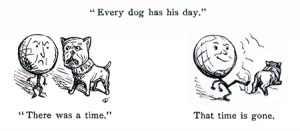Introduction by Sara Vollen
On the last day of January, 2018, acclaimed poet Rory Waterman visited Edinburgh for the Scottish launch of his second poetry collection, Sarajevo Roses (Carcanet, 2017). During his visit, Waterman, who is also Senior Lecturer in English and Creative Writing at Nottingham Trent University, made an appearance as a guest lecturer here at Edinburgh Napier University.
A scholar of twentieth century poetry, Waterman led the ‘Fictions of Terror’ seminar for that week which was on Seamus Heaney’s North (1975) and Heaney’s poetic responses to and representation of sectarian violence and terror in Northern Ireland. Later that evening at Edinburgh’s much-loved radical bookshop, The Lighthouse, which was absolutely packed to capacity, Waterman read from Sarajevo Roses and discussed his work. The sold-out event consisted of Waterman reading selected poems from Sarajevo Roses and his first collection Tonight the Summer’s Over (Carcanet, 2013) as well as a question and answer session led by Edinburgh Napier’s Dr. Arin Keeble. Arin and audience members raised questions intermittently through Waterman’s reading of poems such as the ruminative ‘Brexit Day on the Balmoral Estate’ and the sardonic ‘Tuesday’. The format allowed the poet to reveal his inspirations for the poems and writing process, divulge his views on poetry as art and to discuss his personal influences, and his journey as a poet.
The next day, Waterman sat down with Méabh Ní Dhoibhlin, Abi Mayers and myself (Sara Vollen), a trio of 4th year Edinburgh Napier English and Film students for a formal interview. We were eager to keep the conversation going and excited to hear Rory go into detail about all aspects of his work. The session was recorded and transcribed and appears below:
Abi Mayers: You mentioned you can work on a poem for up to a year after visiting a place, are you actually working on it for that length of time?
Rory Waterman: It really depends, one of the poems I read last night is ‘Ave Maria’. I wrote that whilst I was walking up (the hill); I was jotting it down on the way to this shrine. It wasn’t finished until a good while afterwards. Some others it could be a hell of a long time. I’m not looking for poems when I go anywhere, I’m not consciously on the lookout. Well I must be on some level otherwise I wouldn’t write poems, they don’t naturally occur, they’re not like fruit. It can take a long time, I can be working on it for a year, but I will be doing lots of other stuff too right? But I might start something and think that is going nowhere and it just sits in a notebook. I carry a notebook around, I’ve always got one – I have one at the moment that I just jot stuff in. I get through about three or four of them a year. I’ll go back and pick something up again, so that’s quite often how it works, for me anyway. It can take a long time. The aim is to come up with something that looks spontaneous, but it almost never is. Fabrication, the whole thing.
Méabh Ní Dhoibhlin: When did you start to write and what sparked your interest?
RW: That’s a great question because it invites me to talk about me! Like everyone else who’s literate I tried to write poems when I was a teenager. Who has not written a poem here?
MND: I used to write songs. That was my outlet.
RW: Where does one become the other? I wrote some poems at school and one of my teachers thought I was quite good and sent it off to some competition. That didn’t go anywhere, didn’t win or anything like that. I had the feeling I was quite good at playing around with words and doing stuff with words. And that would be a way I could kind of explain and navigate things. I tried to write a lot of poems in my late teens and they were bad, very bad. I found some actually, in a drawer in my mum’s house, and when I looked at them I couldn’t believe it.
MND: Cringey?
(Laughter)
RW: Then I didn’t write anything. I had a poem in a magazine actually, called ‘Dream Catcher’. I didn’t write anything else for years but then I did my degree, my undergraduate degree. And then I was doing a Masters degree. And I went to university two years later than most people would go, so I was probably about twenty-four when I wrote the first poem where I thought ‘actually this is quite good’. It is in the first book. It’s called ‘A Suicide’, and it is very short. I wrote two poems in that year that didn’t go anywhere but I thought that it was different. Then I didn’t write anything for a couple of years. Suddenly – I think I mentioned this last night – I had started a Ph.D in Leicester, I was living in Bristol in the South-West, and my mum lives in Lincolnshire about two hours from Leicester and my dad in Norwich in East Anglia, and both my mum and my dad within about two months of each other were diagnosed with cancer. My mum very seriously and my dad…well cancer’s serious right? But the prognosis was worse for my mum. They’re both fine now. I didn’t drive at the time so I did a kind of ‘learn in a week’ course and learnt to drive. I was travelling up to Leicester to do my Ph.D., I was going across to Lincoln to take my mum to appointments and doing the same with my dad. I was busy, I’ve never been more busy. I didn’t have time to sleep as much as you’re meant to, I just didn’t. I didn’t have any time to think really, and that’s when I started to write poems. They weren’t poems about that, none of them mention any of that. But they were some of the more personal poems in the first book, the ones about my childhood and that set of experiences gave them a context. It gave all of my personal history a context; it gave it a different dimension. That’s when I started writing, and since then I’ve probably written something like twelve to eighteen pages a year or something like that. That’s a long answer to a short question.
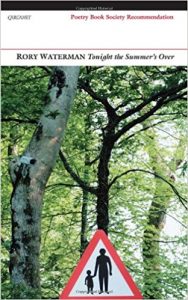
Rory’s first collection, Tonight the Summer’s Over (Carcanet, 2013)
MND: Going on from that, were there certain poets that inspired you to write such as Seamus Heaney?
RW: My dad’s a poet, he would send me stuff to read when I was a kid. I didn’t live with him. He would send me stuff, he was probably exasperated by the amount of things that he sent me that I actually bothered to read. But I knew of that world from a pretty young age. I was reading quite a lot, and poets I suppose are connected with – apart from the poets we all read as kids like ‘Revolting Rhymes’ by Roald Dahl – the first poems I kind of loved were by Seamus Heaney, Philip Larkin, Charles Causley…so they were my first influences. My first influences are pretty broad because I like a lot of stuff, I don’t just read poetry all the time, I don’t like to think and talk about poetry all the time. That’s not to say I don’t want to be here! But there is a hell of a lot more to life than poems, and speaking to some poets you’d think they don’t realise that. I do read a lot of poems, I always have done and I don’t know what my biggest influences are. There are a number of poets I really admire from all sorts of different directions: R.S. Thomas, Alice Oswald, I could go on.
MND: Did you go for a deliberate style or did it just develop naturally?
RW: The latter really. Well, actually, it doesn’t ‘develop naturally’ in a sense because as I’ve said it’s a fabrication. If I’m writing a sonnet it’s a received form, I didn’t make it up. So a bit of both but I certainly don’t try and sound different to myself. It wasn’t about that, it was about connecting…who talked about touching someone’s heart by showing their own? You can’t do that unless you are using your own voice and that’s the highest ideal of poetry for me. That’s what I try to do.
Sarah Vollen: Last night during the Q and A you mentioned how you found writing poems to be really hard. Also – and please correct me if I’m wrong – you noted you experience an element of ‘inconvenience’ when you write, could you expand on this? What specifically do you find difficult about it and what about the process do you find to be inconvenient?
RW: So the inconvenience would come from something popping into my head in the middle of the night, or I’m driving down the motorway or in the middle of class when I’m not meant to be thinking about other stuff…. When you’re trying to find the right words and put them in the best order, and the right vehicle for saying what you’re saying, not just the choice of words but their form. There are a lot of things to consider and sometimes – the truth is – sometimes you don’t consider those things and you let it naturally occur. You follow a form that is dictated by what you’re thinking and how the words come out, to some extent. If those two things start right then you’re onto something and if they don’t it can be really hard. The French poet Valéry said ‘a poem is never finished only abandoned’ and that’s part of it, you can always do something else to it and sometimes you don’t know what that is. The title poem of this book, Sarajevo Roses, the second part of that took forever. If I’m really honest, I’m still not sure I have got it exactly right and it took forever. Well it didn’t take forever, it’s ‘finished’, but it took a hell of a long time. The last three stanzas kept being changed. They kind of rely on one long sentence that ends up at a certain position. It is very hard just getting it right and I knew I wanted to keep it, I knew that poem mattered to me. It was very hard to get it to a point where I was happy to abandon it. That’s part of the problem: you don’t know when you’ve finished. But also they just don’t turn up in my head that often and when they do I’ve just got to make the most of them. That’s part of it. Some people sit down and write every day, but I can’t do it. If I was a novelist maybe. I’ve got a friend who’s a screenwriter, Billy Ivory, and he writes stuff for telly and often when he writes he has got a commission and he has got a date. He can write seven pages a day and sometimes twelve pages a day. But he’s got a plot, he’s got an idea, he’s working towards something. With a poem if I’ve got something I am working with it can be a right pain in the arse because I can be out, walking up a hill or something and I’ll say ‘hang on a minute’ and I’ll write something down. I can get kind of obsessed, like a kid with a train set, and that is all that matters. Then I finish that poem and then there’s nothing, I haven’t got any ideas again.
SV: So you feel like you can only write when the inspiration comes?
RW: Yes, when I’ve got an idea of something and I think I’m on to something, that’s exactly right and that dominates my thought. That doesn’t mean I won’t do anything else. But it does mean it’s the thing I keep coming back to. In odd moments or for a couple of hours every evening, I want to get to it.
AM: Do you ever forget the good ideas you have if you do not write them down?
RW: Yeah, I’ll end up in the middle of the night thinking ‘that’s a good idea but I’m too tired’ and then I’ve forgotten it. Happens all the time.
AM: You said last night that a poem isn’t a diary entry, do you find that it can still be a soothing or cathartic process?
RW: Absolutely, yeah. I mean the one thing I love about poetry above everything else is the trying to find that right way of expressing something in a form that explicates. We all respond to music right? To me, music is the highest of all the arts, if I had to rank them that would come top.
AM: Have you ever tried to write songs or music?
RW: Yeah, I’ve played in bands and stuff like that. I’ve written quite a lot of songs. Let’s compare poetry and painting. It’s a bit of a facile comparison, I realise, but a painting tells you things but it doesn’t tell you in linguistic terms. But a poem is using words and language to tell you things. It is trying to use language at the highest possible level to explore something, to set up a contrast or to pose a problem, or whatever it is. And I think that’s a wonderful thing, you know, that’s its glory.
AM: But do you think there is one meaning for a poem? Say when you write a poem and you have your version of it, do you mind if other people take a different…?
RW: I haven’t got a right to, have I? If there’s a poem like, say, ‘Sleeper’, and you say, ‘oh yeah the one about fishing’, and I say no and you say, ‘it’s definitely a metaphor for fishing’, I feel like I’ve got every right to say no Abi, you’re wrong, it’s not really a metaphor for fishing. But I haven’t really got a right to tell you, you’ve got a right to your reading. That’s the thing, it’s not a diary entry. You’re putting something out there and the poem lives or dies on its own. Even if you come to me and say, ‘what do you mean by that?’, it doesn’t affect the poem, the poem is its own document. You’ve got every right to an interpretation.
MND: Can I ask about the title of the book, Sarajevo Roses, it says on the back it is about the past inscribed on the present and not meant as an overarching symbol. But why that particular symbol?

Rory Waterman, Sarajevo Roses (Carcanet, 2017)
RW: Yeah, it concerned me quite a lot because they’re memorials, resin-filled craters where people died. I mean, I was concerned about it and I asked a lot of people, colleagues I respect. No one seemed to have misgivings or concerns about it, so I went ahead with it. And they’re symbolic of what a lot of the poems in the book are trying to do really. And let’s be honest, the poems are the best poems I’d written since last time, they’re not all around the symbol. There are themes that coalesce but all the same, a lot of the poems in the book do try to memorialise or speak to preserving something and Sarajevo Roses is a very poignant symbol of not forgetting. And also, people don’t know what they are, people might have to look that up and that in itself is a reason because they shouldn’t be forgotten. Because if we forget or we ignore awful things that have happened or are happening between people, we don’t learn from them. And the only thing you can do is learn from them. So that’s another reason, and they’re symbols of hope, they’re not just genocidal symbols.
AM: So do you think you can draw inspiration from only certain things then? If you’re worried about naming the book Sarajevo Roses do you think you only have a right to write about certain topics?
RW: No, not at all and that’s what ultimately trumps it for me because I think you have a right to write about anything. We can’t have subjects that are off limits. There are lots of great ways of striving towards justice and equality but making things unavailable for people to consider is just a strange puritanism that I don’t believe in and it’s totally inimical to its aims normally. So yeah, I totally believe in being able to write about anything. The reservations were just because they are symbols of a genocide that I didn’t experience. I didn’t want it to seem vicarious, and that was my reservation. But no, of course it’s not off limits.
SV: A lot of the poems in this collection seem to integrate almost a contrasting pastoral imagery with city or urban abjection which I found really interesting. Was that a conscious choice?
RW: No, not really. I sort of wrote about what occurred to me and what was in front of me at the time. And I live in Nottingham and it’s quite small for a major city, it’s in the middle of England, towards the middle of Britain really and it’s very close to the Peak District, as well as being very close to the area I grew up in which is very flat and empty. But also, there are lots of former mining towns which are impoverished and have been sort of left to rot and die, by policy, and that’s part of that environment as well. So just thinking about where I live, all those things are what I’m surrounded by. If I’m writing about what I’m experiencing, then that’s bound to creep into it. Have you got a specific poem in mind?
SV: I actually was thinking of the poem ‘Reunion’ and how you’re evoking this very idyllic Americana imagery but as well as showing the decay of it at the same time.
RW: Yeah, I suppose that’s true. That is what I’m evoking. I mean you get all those flags don’t you? People display a flag and it’s all sort of normal and almost chocolate-boxy. I’m not really keen on perfect pastoralia. The first poem is about going up to a hill fort and it’s all very lovely in a way but it ends with finding a dead animal in the wood. There’s always a fly in the ointment, nothing is one thing or another, it’s always more complicated than that. So just evoking nature and saying isn’t this lovely, well go and have a look at it, go to a national park if you want that but a poem should be doing more than just evoking a nice scene. So if I just wanted to evoke a landscape, I wouldn’t bother putting it into a poem.
SV: So instead of paintings which are more about capturing an image, with your poetry what you’re trying to do is critically comment or think more about that image.
RW: Yeah. I mean a painting can do that, it’s less likely to but it can. But with a poem, I mean I don’t just want to evoke a lovely landscape, or a shithole. What’s the point? And I don’t want to tell anyone what to think. Quite a lot of the poems, there’s something almost overtly political. But I certainly don’t want to tell anyone what to think. They’re not protest songs. If all you can do is read a poem and say oh yeah I agree with that, or no that’s rubbish, then what’s the point? They’re not protest songs. They’re poems.
SV: So instead of forcing an answer, you want to evoke questions and make people think.
RW: Yeah. Everything’s complicated, absolutely. Subtext is there, hanging heavy all the time.
AM: With what you were saying about writing about nice things and not so nice areas. Do you ever feel a responsibility with your writing to make something a bit more positive or a little less depressing? For example, Larkin is quite morose. Do you ever want to avoid people reading your poems in the future and thinking ‘wow, that’s really depressing’?
RW: Yeah, I don’t just want to be like Eeyore with a beard. It’s always more complicated than that. If you’re just saying something is awful then what’s the point? I think you can potentially be chilling and uncanny and unpleasant in certain ways but why shouldn’t you be? Art doesn’t have to be nice but no, I don’t come here to be just death and genocide and murder, I’m not a doom metal band. So, no, I’m not interested in being like that at all. I don’t feel like I’ve answered your question. Let’s have another go.
AM: I just mean it in the sense that if you’re going to put your name on something to publish and for the public to see, do you feel a responsibility to make the subject a little less rough around the edges or appease the audience in any sense?
RW: No, I see a sort of obligation to the truth. I can imagine not wanting to publish something because it might upset someone, but if I’m going to publish something I’m not going to smooth it out because it might upset someone.
MND: Being from the North of Ireland I feel I’m more politically aware in some senses, and you were saying yesterday that you spent some time in the North and were aware of that situation growing up. Do you think that being aware of that situation made you question things politically more or didn’t have anything to do with it?
RW: Definitely the former. When I was 11, the Coleraine bomb happened so immediately he rings up to tell me he’s fine. He lived in a mainly Catholic area and he had friends in that part of town and his kids were my friends so mainly the friends that I had were Northern Irish Catholic. So they were my friends and we got on great and I didn’t understand. I mean, I was a kid from Lincolnshire so I wasn’t involved in the same way but when I was in Northern Ireland, I suddenly was at home there in a weird way. I mean I wasn’t part of the place but my friends were and my dad was and that’s where it was then. I was very aware of those sorts of things and not necessarily able to articulate them because I was a kid but yeah, very aware in a way that most kids in Lincolnshire weren’t. And I remember people saying idiotic things about Northern Ireland at school, they just didn’t know anything. I remember being in London with a friend and his parents, just after the Docklands in the mid-90s. I remember his Mum being worried about us going into London to go to a gig because there had been the Docklands IRA bomb. I just remember thinking, that this is ludicrous, you are worried about us going to a gig in London because there might be an IRA bomb? I sort of understand because it feels like a long, long way away from England. You know what the reality was like from the ground: it wasn’t like that at all but at the same time it was all very different from life at home in Lincolnshire. But another aspect of when my sort of political consciousness began was when I was… so we lived in my Grandma’s house when I was growing up, my Mum left my Dad and moved me to Lincolnshire into her Mum’s house and we lived in this little stone lodge house to an estate about a mile from the next village. A tiny little house, then my grandma died in 1997, and we thought she owned the house, but she didn’t. It was on a lease from an estate, a country estate, for as long as my Grandmother and/or her husband were alive. So a letter came through from this sort of bastard landlord, telling my mother that she had to vacate the house that now belonged to the estate, to this farming estate. That politicised me. So now I’m getting on my bike, my Mum doesn’t drive, her Mum just died, my Aunt is off to her son’s house and sort of just leaves Mum to do everything. And I’m biking around the countryside looking at council houses: you know, a 15-year-old kid and his mum, we were more or less put to the top of the list, the council housing list. So I’m biking around, looking at all this social housing the council had given us a choice to live in, then calling her from other villages saying ‘Ah, you know Mum, I think this one is alright’. But all that I have seen since then is that sort of thing be eroded, to the point that if that happened to a single parent and child now they would be put in a Bed and Breakfast or something, at a much greater expense to the state and with no dignity. Simply for being human beings. That politicized me a lot, and one time, a while after we moved, I biked over to the estate, where they’d just built these big gates with the name of the estate logo engraved, and I went there with a hammer in the middle of the night and I…. So, yeah, I’m quite politicized.
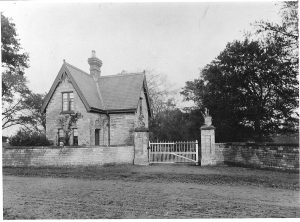
A 1950s image of The Lodge, Nocton, where Waterman grew up in the 1980s and 90s
SV: So…on a lighter note, first I have to say that your poem ‘Tuesday’ was the first poem I’ve ever read that actually made me laugh aloud while reading it.
RW: Oh, thanks!
SV: So out of pure curiosity on my part, I was wondering what inspired you to create the protagonist of Dr. Bob Pintle?
RW: So, To ‘bob’ something, is to like, you know, bob for apples and that. Pintle is sort of, well it is part of a hinge. But it was also Old and Middle English, and later slang, for a penis. So, it is a ridiculous name. If you read it now knowing that, you can see bits where ‘Pintle does this’ and ‘Pintle does that’, you can see that it is a cock joke.
SV: That just makes it funnier.
RW: There are some bits where it is just that, but what inspired it…Ok, so, there is a kind of tradition of things like campus novels and people taking the piss out of academics. Academics taking the piss out of academics too. The most famous example of it is a novel by Kingsley Amis, which you might know, called Lucky Jim. It was written in the 50s and its very good for what it is and all the rest of it. There are some universals, and there are some things that are very different now, and the poem had to capture those. Now universities are run as businesses, not always necessarily in the interests of students, and academics are doing everything they can to do the best things for students. But of course, like in any industry, you have charlatans too. Bob Pintle is a kind of pastiche cartoon version of a complete charlatan. Someone who just wants to freeload and coast, so he is actually odious. Odious enough that you don’t care about him in some ways, so that is kind of part of the point. You sort of do but you don’t really because he is just horrible. He is horrible and kind of terrible at his job as well. But he’s obsessed by things like, you know, the REF (or Research Excellence Framework), which you might have heard of.Its Top Trumps for academics, our research ranked according to stiff and sometimes inimical criteria. You have to submit a certain amount of research ‘outputs’ or items and they are rated by people who perhaps don’t really read them, or know enough to pass any judgement. Then the university gets funding money accordingly. So everyone has to plan how they are to do these things but of course he’s lazy. So he actually doesn’t want to publish any research, he is kind of hamstrung by that. He’s lecturing in ‘Creativity’, so he is just making a mockery of certain things. I mean, I am a lecturer and my job is teaching English and Creative Writing, I don’t actually hate this world but I am lampooning from a position of love. That is the thing, it is taking things too far but potentially making certain things and types of people uncomfortable. The idea that certain members of academic management, the high level administrators that make three times as much as we do, it might make them upset, I don’t mind a bit. I’m happy about that. I am very happy about making academics who identify parts of themselves with Pintle or others in the poem upset as well.
SV: So is it more like a commentary on the bureaucracy that has kind of happened with universities?
RW: A little bit, but it is not meant to be cruel. It is meant to be a cartoon pastiche with a hell of a lot of truth to it. I am glad that you find it funny, thank you, but I don’t think it would be funny if it didn’t have any truth to it. But I also don’t think it would be funny if it was entirely true. Do you know what I mean?
SV: Yes, in that you almost had to make a hyperbolic version of it create that distance.
RW: That’s exactly it, that’s a better version of what I was trying to say. [Laughs] I’ll take it.
AM: In ‘Between Villages’, it looks like youth and the promise of future. I apologise, this is a really pretentious question, but is there a bit of a comparison between your sort of younger and adult self in that?
RW: Going back to something we’ve said before, if that is what you see in the poem, then it is…
AM: But what do you see in it?
RW: What do I see in it? What was I intending to do with it? What was I hoping? What do I think it is? Yeah, absolutely. Of course, I am going back to, it’s…. Well, there are three poems in there that are for or about my friend Mike, my oldest friend who I grew up with and went to school with and the rest of it. That’s the only one that is actually dedicated to him. It’s the shortest but it is dedicated to him. It is going back to an experience that was very, very familiar but it no longer is now. We used to walk the distance between Nocton and Dunston, these two little villages in Lincolnshire. They are about a mile and a bit apart. If you go by road it is two miles. You are not going to do that: if you walk, you walk the fields and there is a little bridle path. It is just a little bridle path between the two villages and winds through the fields. The amount of times we just kind of walked over, they had a pub where we’d play pool and that sort of thing. So it is going back and doing the same experience, but all this time later. Sitting on time’s arrow and getting further away from it as well but reliving the same sort of experience.
AM: The bit about, I think you said something about ‘looking up into the sky’ or something, is that about how you can’t see the stars where you live now? Is that a country/city thing?
RW: Do any of you come from a place that is far in the countryside?
AM: Yes.
MND: Oh yeah.
SV: Where I grew up? Yeah.
RW: So, coming from a city now, you must go home and look up at the sky and are like ‘bloody hell!’. It is just that…
AB: Yeah, I thought…
RW: What the sky looked like when I was a kid. Yeah, sorry, that kind of sounds rose-tinted but that was just because of where I was. That is just what I thought the sky looked like; I didn’t know what light pollution was. It was like being in a planetarium. In Nottingham, on a clear night, there are 25 stars. It is just something that is just different, in a way that you all know.
SV: So, my final question is: after someone read this collection what would be the one thing that you would want them to take away from it?
RW: Ah, that is such a hard question…
SV: [Laughs] Sorry? [Laughs]
RW: [Laughs] I can give a very short answer that is absolutely the truth. I want them to feel like they’ve been, and I mean this in the broadest sense, I don’t mean it like a clown or something, but I want them to feel like they’ve been entertained. Right? I don’t see the point in them thinking ‘Oh damn, that is just too clever for me. It must be good because I don’t understand it’. Which is a way that some people treat poetry, that ‘I don’t understand it, so it must be good poetry’. I don’t want that but I don’t want it to always be easy. I think the second book has poems in it that are generally a little bit more difficult than the first. They play around with rhythm and time and all sorts of things, but I am not interested in completely dumbfounding and confounding the reader. I absolutely want them to be entertained but in the broadest sense.
AM: Maybe just one last question to ask… ‘It Began’, is that sort of about missed opportunities?
RW: I don’t know if there is a poem called that…
AB and RW: Oh, ‘It was’.
RW: Sorry, yeah, sorry, I was just trying to-
AB: Don’t worry, I’ve done my research…
[Laughter]
RW: Yeah, it is. I get on extremely well with my mum and that is what it basically boils down to. We had quite a difficult relationship when I was growing up. For all sorts of reasons, but one is that my dad would tell me all sorts of things about court proceedings and access and custody and how my mum had said this in court and so on. Just things that a 4 year old or a 5 year old or a 6 year old shouldn’t know. It made me very confused and angry. My mum didn’t do any of that back. So we kind of had… so it was sometimes quite difficult growing up. In ways that I’m quite sad about sometimes, but we get on extremely well now. It is about her suppose, it was her I was thinking of when I wrote that, but it doesn’t really speak to a specific experience. It is just, you know when you are with someone, who is a relative or something and you are very close to them. Close enough that you let your guard down a bit in ways that you might not otherwise and you end up thinking ‘I should have been nicer more’. That is a reminder to be nicer. A reminder to cherish things. I jotted it in a notebook, and I forgot all about it. I don’t know how long later I found it but I thought ‘That’s a poem’. I don’t know how I composed it, I think I just wrote it in one. I think it is the most naturally occurring poem I have ever written. In terms of one that I have published. I can’t remember writing it, I just remember finding it in the notebook. That is not true for any of the others. Yeah.
RW: Great questions. Thanks.
SV: Thanks!
AB: Thanks very much.
MD: Thank you very much.
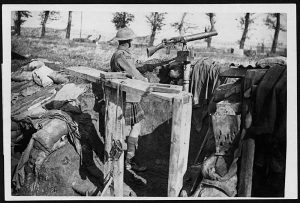
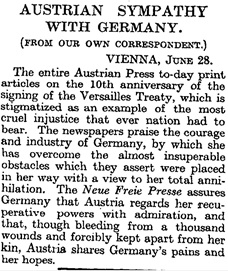





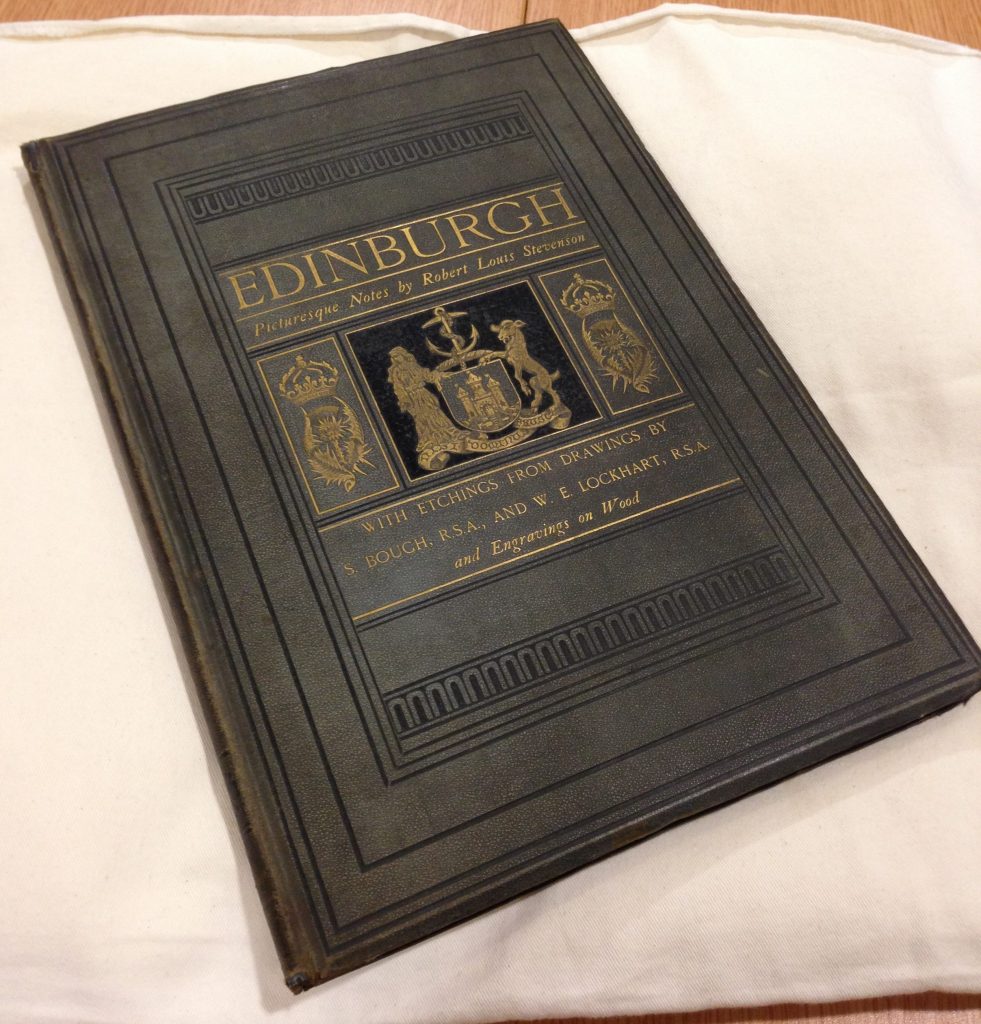
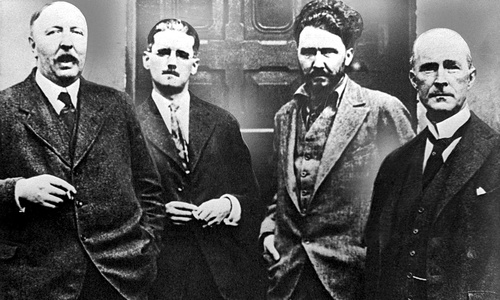


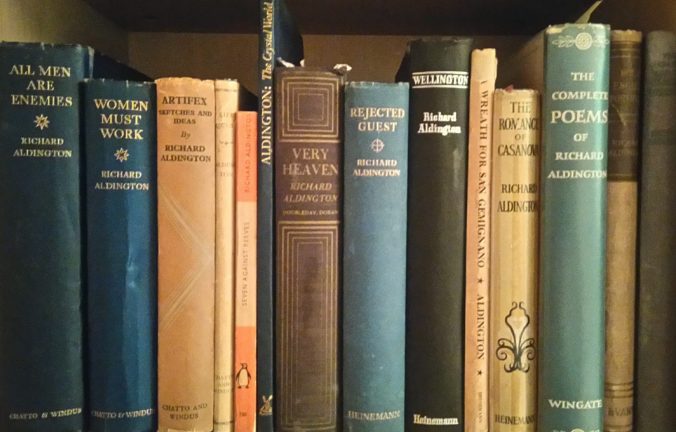
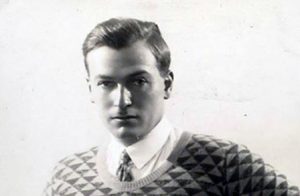
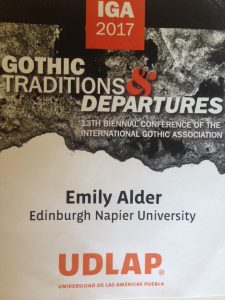 I have been a member of this Association for ten years and this was my fifth conference. It’s always a pleasure to see old friends and familiar faces as well as getting to know the many fascinating new people I inevitably meet at events like this.
I have been a member of this Association for ten years and this was my fifth conference. It’s always a pleasure to see old friends and familiar faces as well as getting to know the many fascinating new people I inevitably meet at events like this.
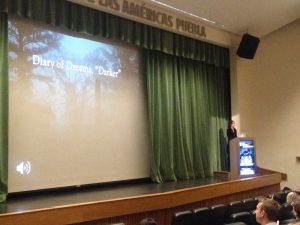
 LitLong: Edinburgh
LitLong: Edinburgh
